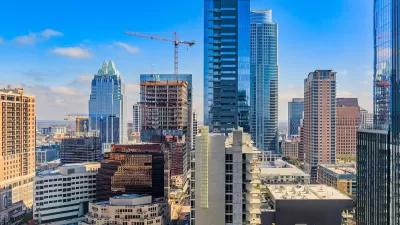A state bill that would allow multifamily buildings to only include one staircase could help boost the housing supply and encourage more spacious and well-designed apartments.

The Los Angeles Times Editorial Board is getting behind the movement for single-staircase reform, which proponents argue would create the opportunity for more housing.
The editorial highlights Assembly Bill 835, which “would direct the State Fire Marshal to propose standards to allow multifamily buildings with one stairway while still protecting residents, which could make it easier to build small-to-medium sized complexes on small lots.”
Single-staircase buildings were outlawed in many U.S. cities and states in the early 20th century as part of an effort to improve fire safety in multifamily buildings. “In recent years, however, indoor sprinklers and fire-safe construction have become common in new buildings, and architects and housing advocates argue that the two-stairway requirement should be reconsidered.”
The two-staircase requirement has eliminated building designs common in other countries that provide more variety and opportunities for community, while data suggests that there is no difference in fire safety given other modern fire standards.
The editorial board acknowledges that allowing single-stair buildings wouldn’t solve the housing crisis, but it could join other policy solutions such as ADUs in alleviating the shortage and creating more interesting and comfortable buildings. “The change would give architects more flexibility in designing larger units for families, with shared courtyards, more light and ventilation.”
FULL STORY: Editorial: How changing the rules on stairways could help California build more homes

Alabama: Trump Terminates Settlements for Black Communities Harmed By Raw Sewage
Trump deemed the landmark civil rights agreement “illegal DEI and environmental justice policy.”

Planetizen Federal Action Tracker
A weekly monitor of how Trump’s orders and actions are impacting planners and planning in America.

The 120 Year Old Tiny Home Villages That Sheltered San Francisco’s Earthquake Refugees
More than a century ago, San Francisco mobilized to house thousands of residents displaced by the 1906 earthquake. Could their strategy offer a model for the present?

San Francisco Opens Park on Former Great Highway
The Sunset Dunes park’s grand opening attracted both fans and detractors.

Oregon Legislature to Consider Transit Funding Laws
One proposal would increase the state’s payroll tax by .08% to fund transit agencies and expand service.

Housing Vouchers as a Key Piece of Houston’s Housing Strategy
The Houston Housing Authority supports 19,000 households through the housing voucher program.
Urban Design for Planners 1: Software Tools
This six-course series explores essential urban design concepts using open source software and equips planners with the tools they need to participate fully in the urban design process.
Planning for Universal Design
Learn the tools for implementing Universal Design in planning regulations.
Clanton & Associates, Inc.
Jessamine County Fiscal Court
Institute for Housing and Urban Development Studies (IHS)
City of Grandview
Harvard GSD Executive Education
Toledo-Lucas County Plan Commissions
Salt Lake City
NYU Wagner Graduate School of Public Service





























